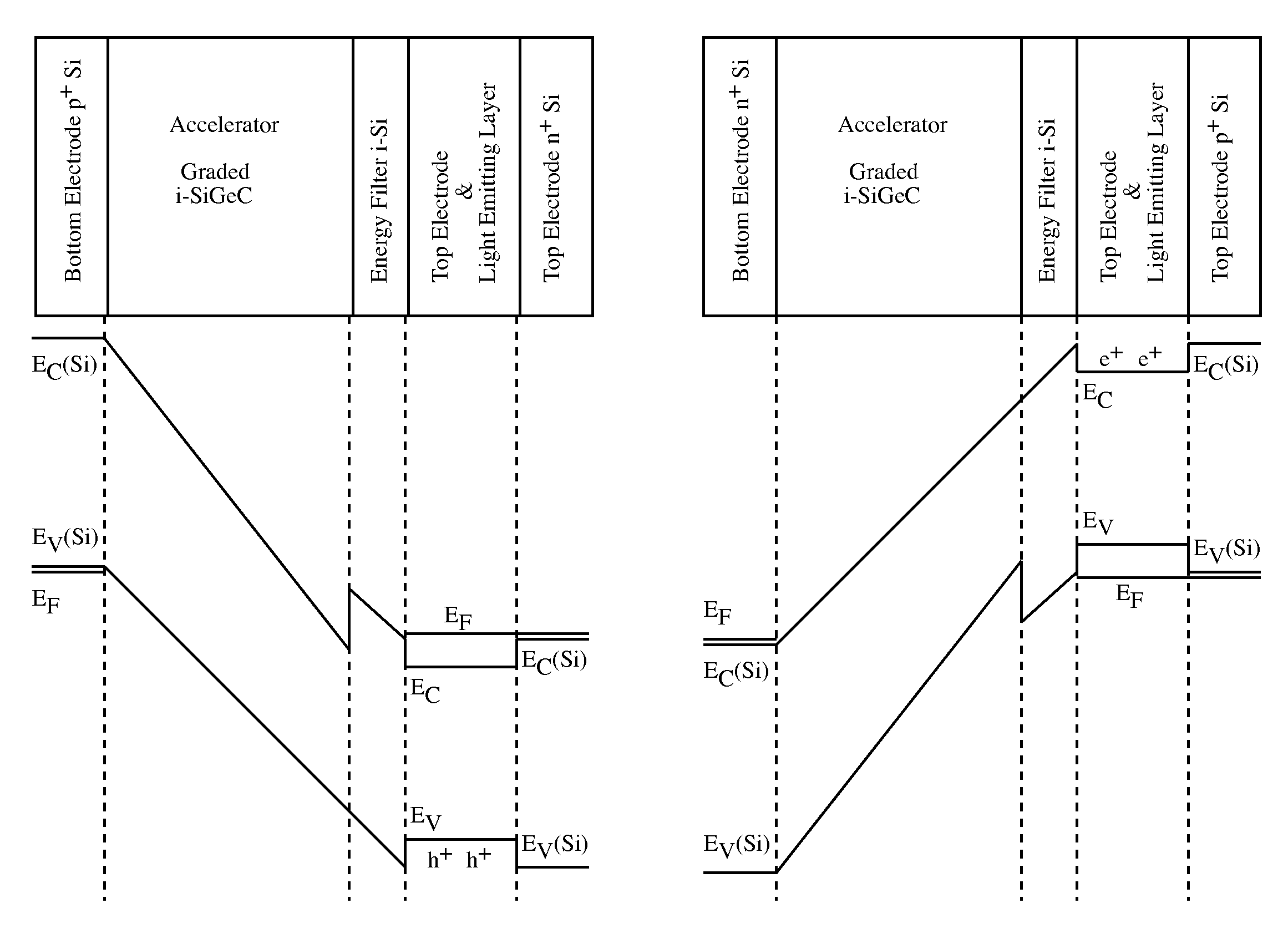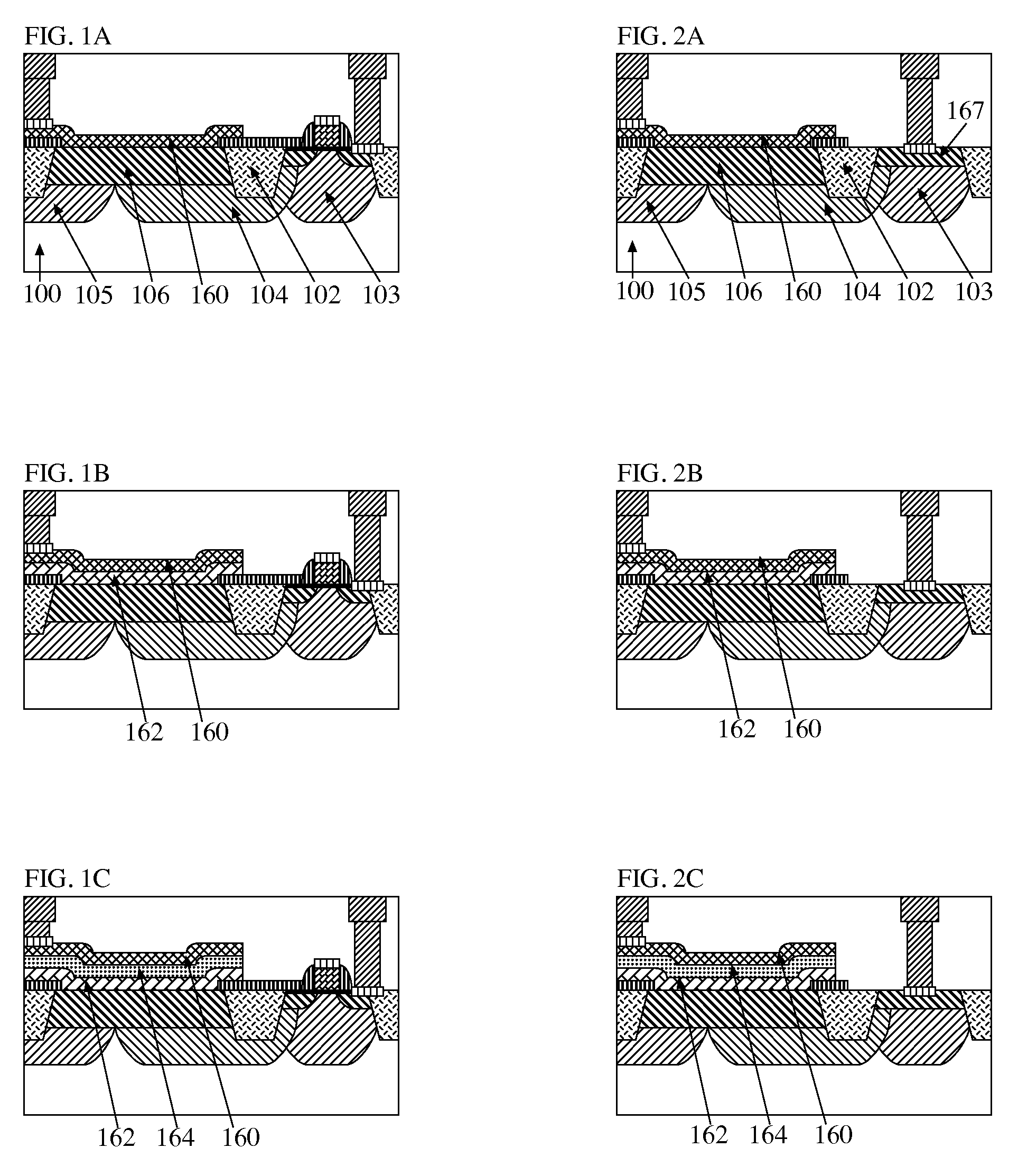CMOS pixels comprising epitaxial layers for light-sensing and light emission
a technology of epitaxial layers and cmos pixels, applied in semiconductor devices, solid-state devices, radiation controlled devices, etc., can solve the problems of reducing the external power efficiency severely, unable to take advantage of practical applications, and low efficiency
- Summary
- Abstract
- Description
- Claims
- Application Information
AI Technical Summary
Benefits of technology
Problems solved by technology
Method used
Image
Examples
Embodiment Construction
1. Method of Fabrication
[0064]The present invention makes use of the fabrication architecture and process flows disclosed in WO 2002 / 33755 which covers the fabrication of Avalanche Photo-Diodes (APDs) with epitaxially grown active layers, monolithically integrated with bulk CMOS devices. The fundamental advantage of that fabrication architecture is that some of the active layers of the APDs are epitaxially deposited on CMOS active areas, immediately adjacent to MOSFETs, thereby resulting in a very compact monolithic integration with CMOS. Because some of the active layers are epitaxial layers deposited on a silicon surface (active area), it is possible to have materials that are epitaxially compatible with silicon, other than silicon itself.
[0065]Similarly to WO 2002 / 33755 and WO 2004 / 027879, the method of fabrication of the present invention, follows the standard CMOS process flow until the formation of silicide layers. Ideally the epitaxial deposition takes place after all high te...
PUM
 Login to View More
Login to View More Abstract
Description
Claims
Application Information
 Login to View More
Login to View More - R&D Engineer
- R&D Manager
- IP Professional
- Industry Leading Data Capabilities
- Powerful AI technology
- Patent DNA Extraction
Browse by: Latest US Patents, China's latest patents, Technical Efficacy Thesaurus, Application Domain, Technology Topic, Popular Technical Reports.
© 2024 PatSnap. All rights reserved.Legal|Privacy policy|Modern Slavery Act Transparency Statement|Sitemap|About US| Contact US: help@patsnap.com










